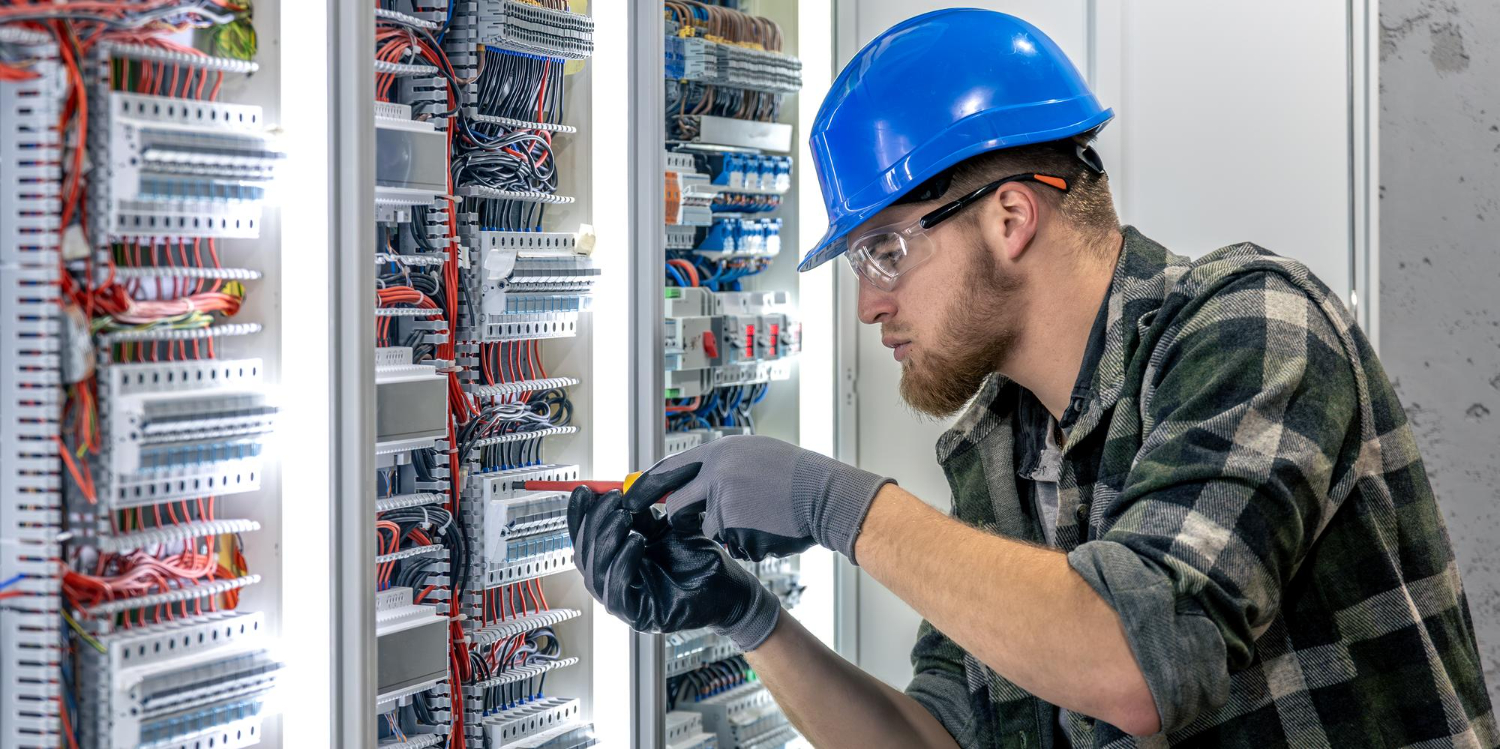In industrial and commercial electrical systems, we often focus on the components inside — circuit breakers, drives, PLCs, wiring, relays, etc. But one of the most overlooked elements is the enclosure that houses them. Without proper ventilation and thermal control, even the best electrical components will suffer early failure, erratic behavior, and sometimes catastrophic breakdowns. In this article, we examine why ventilation matters, what design strategies exist, and why a manufacturer like BCH Electric stands out in India for high-quality enclosures designed with thermal performance in mind.
The Heat Problem Inside Electrical Enclosures
1. Internal heat generation
Every active electrical component dissipates heat — power supplies, converters, variable frequency drives (VFDs), switching regulators, transformers, etc. In many modern control panels or distribution boxes, the heat load is substantial. Without proper dissipation, this heat accumulates.
2. Ambient conditions and insulation
If the enclosure is located in a harsh environment (high ambient temperature, sunlight, poor air movement), the external conditions worsen the thermal stress. Also, many enclosures are relatively sealed (to protect against dust, moisture, and ingress), which further insulates the internal heat.
3. Hot spots and uneven temperature
Inside a cabinet, some devices may run hotter than others. Without airflow, there can be “dead zones” or hotspots that exceed safe temperature even if the average internal temperature seems acceptable. Good airflow helps smooth out temperature gradients.
4. Component life and reliability
Excessive heat accelerates aging of electronic components. A common engineering thumb rule is that for every 10 °C rise above the rated operating temperature, the lifetime of many components may halve (or degrade significantly). Also, prolonged high temperature can lead to drift in sensors, increased resistance, insulation breakdown, and even failure of semiconductors.
5. Safety, performance, and downtime
Overheating in enclosures can lead to nuisance tripping, unpredictable operation, or in extreme cases, fire hazards. In industrial settings, downtime has huge cost implications. A thermal event in a control panel can shut down production lines.
Why Ventilation / Airflow Is a Key Part of the Solution
Ventilation is not always “just adding holes.” It’s about engineered airflow to move heat from the interior out, while preventing ingress of contaminants. Here’s how ventilation helps:
• Remove stagnant boundary layers
Inside a sealed box, heat accumulates in a thin boundary layer near surfaces. By allowing movement of air, that boundary layer is disrupted, improving heat transfer from internal devices to ambient air.
• Promote convection (natural or forced)
-
Natural convection: designing vents or louvers so that warm air rises and escapes from the top, while cooler air enters from a lower vent.
-
Forced convection: using fans to drive airflow, especially when heat loads or ambient conditions are severe.
• Prevent hotspots
By guiding airflow past critical components, you reduce local overheating and ensure more uniform internal temperature.
• Balance protection & breathing
While ventilation opens pathways for air, you still need to guard against dust, moisture, insects, etc. That’s why many enclosures use filtered vents, louvers, and designs that channel airflow without direct exposure.
• Integration with active cooling
Ventilation often forms part of a broader thermal control scheme — for example, combining vents with fans, heat exchangers, or air conditioners inside the enclosure. The vents provide pathways for air circulation; the active components do the heavy lifting of heat transfer.
Design Considerations & Best Practices
To design effective ventilation / cooling in electrical enclosures, keep the following in mind:
|
Design Factor |
Considerations / Best Practices |
|---|---|
|
Heat load calculation |
Estimate the total heat (in watts) produced by all components, plus heat influx from ambient sources. |
|
Ambient & location |
Is the enclosure indoors, outdoors, under sunlight, in dusty or corrosive environment? |
|
Vent location / orientation |
Place vents to exploit natural convection: cooler air entry from bottom, discharge toward top. |
|
Louver and filter design |
Louvers, baffles, and filters to block dust or insects while enabling airflow. |
|
Fan / blower selection |
Consider pressure vs. flow trade-offs; overcome internal resistances. |
|
Internal layout |
Avoid blocking airflow with cables or equipment; leave clearance around heat sources. |
|
Thermal safety margins |
Provide a buffer above estimated load to account for variation, aging, and worst-case ambient. |
|
Maintenance access |
Filters or vents must be accessible for cleaning or replacement. |
|
Sealing & ingress protection (IP / NEMA ratings) |
Striking a balance between ventilation and protection. |
|
Monitoring & feedback |
Use temperature sensors or thermal monitoring to detect early overheating. |
When Ventilation Alone Isn’t Enough — Enhanced Cooling Options
In many real-world applications, ventilation must be augmented by active thermal control systems. Some options include:
-
Forced air fans (axial, blowers)
-
Air-to-air heat exchangers (isolated internal & external airflows)
-
Thermoelectric coolers
-
Enclosure air conditioners / climate control units
-
Air-to-water or liquid heat exchangers
These approaches can maintain internal temperatures below ambient or in tight control zones.
Why the Right Enclosure Manufacturer Matters
Given the complexity of balancing protection, heat management, longevity, and cost, the choice of the enclosure itself is critical. A manufacturer who understands both mechanical protection and thermal design will deliver better, more reliable results.
What to look for in a top enclosure manufacturer:
-
Strong material selection (metals with good thermal conductivity, corrosion resistance, structural strength)
-
Thoughtful design features (pre-provisioned vent options, modularity, internal mounting layouts)
-
Ability to customize vents, louvers, filtered airflow paths
-
Proven quality, compliance with IP/NEMA ratings, testing for environmental durability
-
Experience in thermal design, possibly offering thermal analysis support
-
Good service, after-sales support, spare parts
BCH Electric: A Leading Electrical Enclosure Manufacturer in India
In the Indian market, BCH Electric Limited is one of the prominent names when it comes to electrical enclosures, switchgear, and related solutions.
Why BCH Electric merits attention:
-
Legacy & reputation
Founded in 1965, BCH Electric has long experience in low-voltage control systems, switchgear, and panel solutions in India. -
Diverse enclosure portfolio
They offer a wide variety of enclosures: floor-mounted, wall-mounted, modular enclosures, outdoor enclosures, IP-rated enclosures, etc. -
Material & build quality
Their enclosures are typically fabricated in steel (CRCA sheet), powder coated, with proper sealing (gaskets) and IP ratings (IP55, IP66) when required. -
Customization & modular design
BCH offers tailored solutions, modular enclosures, and flexibility in design to match the client’s thermal and spatial needs. -
Market standing
In listings of top electrical and steel enclosure companies in India, BCH is often cited among the leaders.
Because ventilation and thermal design are integral to reliable electrical panels, opting for a manufacturer like BCH Electric can leverage their domain knowledge in both enclosure protection and practical use in Indian climatic environments.
Conclusion
In summary: thermal stress, hotspots, and overheating are major threats to performance and reliability inside electrical enclosures. Ventilation and engineered airflow are foundational tools to mitigate these risks. But ventilation must be paired with good enclosure design, component layout, protection against ingress, and sometimes active cooling methods.
If you are designing or upgrading control panels, distribution cabinets, or electronic enclosures, paying attention to ventilation from day one is non-negotiable. And choosing an experienced enclosure manufacturer — especially one that understands the challenges of Indian environments like BCH Electric — gives you a head-start in achieving robust, long-lived, maintainable installations.
If you like, I can prepare a version of this blog tailored to your target audience (industry, technical depth, visuals) or even an infographic — would you like me to do that?


